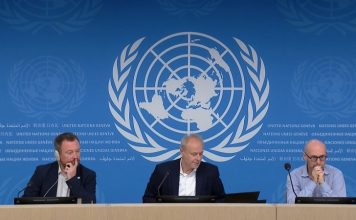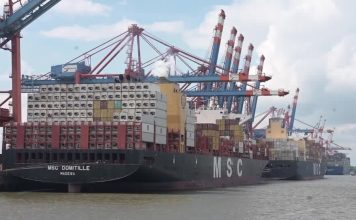By Alex Lawler
LONDON, Aug 31 (Reuters) – OPEC oil output rose in August as Iranian supply rose to its highest since 2018, a Reuters survey found on Thursday, despite ongoing cuts by Saudi Arabia and other members of the wider OPEC+ alliance to support the market.
The Organization of the Petroleum Exporting Countries has pumped 27.56 million barrels per day (bpd) this month, the survey found, up 220,000 bpd from July. That’s the first rise since February, according to Reuters surveys. PRODN-TOTAL
Iran is exempt from OPEC cuts and its exports have been rising in 2023 despite U.S. sanctions, although views differ as to the exact scale. The overall development, some analysts say, is adding to OPEC+’s challenge in managing the market.
“Iran‘s output and export data are not transparent and major decision-makers like OPEC+ that adjust their production to balance the market can’t be assured of Iran‘s supplies in the months to come,” said Sara Vakhshouri of consultant SVB International.
Lawmakers Urge Biden to Resolve Offloading Delay of Seized Iran Oil Tanker
Output from the 10 OPEC members that are subject to OPEC+ supply cut agreements edged lower by 10,000 bpd, the survey found. Saudi Arabia and other Gulf members maintained strong compliance with agreed cutbacks and extra voluntary reductions.
Top exporter Saudi Arabia kept August output within a whisker of 9 million bpd, the survey found, as the country extended a voluntary 1 million bpd output cut for a second month to provide extra support for the market.
Iranian oil output hit 3.10 million bpd in August, the survey found. This is the highest since 2018, the year Washington re-imposed sanctions on Iran, according to Reuters surveys and separate figures from OPEC. PRODN-IR
Analysts have said the higher exports appear to be the result of Iran‘s success in evading U.S. sanctions and Washington’s discretion in enforcing them as the two countries seek better relations.
The second-largest increase in OPEC output this month came from Nigeria, where exports resumed from the Forcados terminal after a shutdown, the survey found.
OPEC’s output is still undershooting the targeted amount by almost 800,000 bpd mainly because Nigeria and Angola lack the capacity to pump as much as their agreed level.
The Reuters survey aims to track supply to the market. It is based on shipping data provided by external sources, Refinitiv Eikon flows data, information from companies that track flows such as Petro-Logistics and Kpler, and information provided by sources at oil companies, OPEC and consultants.
EXCLUSIVE – China’s CCPC Takes Centre Stage in Iran, Venezuela Oil Trade-Sources
(Additional reporting by Ahmad Ghaddar. Editing by David Evans)












